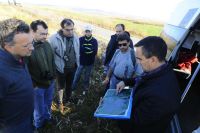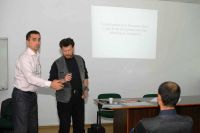On the 9th – 11th October 2014 The National Museum of Eastern Carpathians organized the 11th edition of its Annual Scientific Conference, called this year “The Romans and their neighbours in the eastern Carpathian region (1st – 5th centuries A.D.)”


The main goal of this conference was to bring together researchers that focus upon the archaeological phenomena of the first half of the first Christian Millennium. To the same extent it offered them a platform for discussing the issues related to researching the relations of the Eastern Carpathian region with the roman provincial one, and as well with other neighbouring regions, during the 1st – 5th centuries A.D. Even since antiquity the Eastern Carpathians were perceived as a nature-made obstacle standing in-between the communication of the human communities found on both its sides. Although political and cultural borders were set along this ghat, the Carpathians were never an actual geographical barrier that couldn’t be crossed. The large number of gorges permitted the communication from East to West and all the way around. In the Dacian period the gorges of the Eastern Carpathians assured the contact of the communities that lived inside the Carpathian Arch with those that lived east of the Carpathians or in the Lower Danube region. In the Roman period the border of the Roman Province Dacia was set alongside the Eastern Carpathians. Until the retreat of Aurelianus from Dacia, the province was overseen by military troops detached on the east Transylvanian Limes. In the post-roman period the territories adjacent to the Eastern Carpathians were inhabited by Sântana de Mureş-Cernjachov communities. These three outstanding periods that marked the history of the Eastern Carpathian region were the focus of our interest during the scientific symposium. In this respect, members of our project team spoke about the results of their work in the past few years, in the project-frame: Lorand Bordi, Alexandru Popa, The roman Camp from Boroşneu Mare – 100 years since its discovery Alexandru Popa, The Romanian-German project “Geomagnetic prospections in south-eastern Transylvania: results and perspectives” Andrea Chiricescu, Alexandru Popa, "The eastern Limes of Roman Dacia" – travelling, bilingual exhibition for 5th to 8th grade pupils from south-east Transylvania